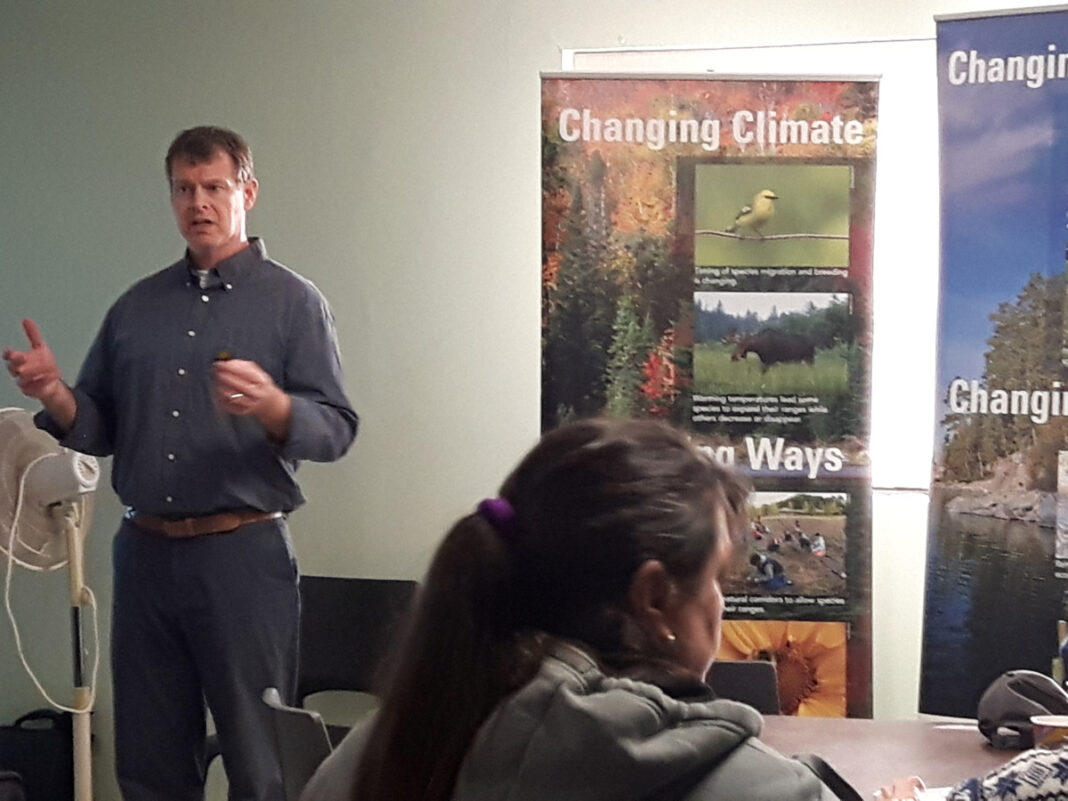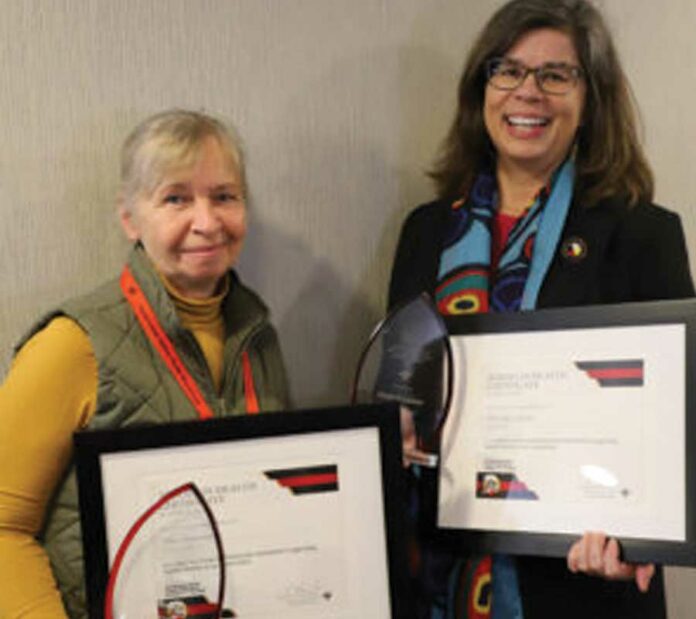MANITOULIN—The effects of climate change are already apparent through anecdotal evidence, warmer temperatures, rashes of wildfires, changing water levels and extreme weather events. The term ‘climate’ refers to the changes in weather over time.
In September of 2023, The Expositor spoke with Al Douglas, founder of The Climate Risk Institute, regarding the provincial risk assessment, which he described as “crude.” It covers the province of Ontario in six regions, in broad strokes. The current data set doesn’t apply to the uniqueness of Manitoulin Island, he noted at the time but with the assessment complete, wide as it may be, the Province of Ontario can now begin building a climate resilience strategy.
In 2017, The Climate Risk Institute, in partnership with the Manitoulin Streams Improvement Association, received provincial government funding to collect temperature and precipitation data for Manitoulin Island. The goal of the project was to create a data set to measure changes in climate over a more extended period of time. Some municipalities, such as the York and Waterloo regions, have commissioned their own Climate Change Vulnerability and Risk Assessments, which will position them to work with the private and public sectors to create plans for climate resilience. With Manitoulin Island presenting unique weather patterns that differ even from our neighbours on the North Shore, Mr. Douglas believes a Risk Assessment is essential.
“You have to get it down into finer scales. Manitoulin Island should have a climate change risk assessment done of its own,” he reiterates. “If you look at southern Ontario and even Northern Ontario, the cities are doing this. You take a look at how climate has changed, you ask the people what the impacts are and you determine what is important for a community and then to what extent is that painful in the future, what are the consequences. And you rate the consequences and prioritize those things according to the likelihood of the climate event.”
However, Mr. Douglas asserts that a data set could be created by incorporating measurements from weather stations along Highway 17 to fill existing gaps.
“You pick all of the dots from all around the stations on the Island, and you can say all these stations have changed to that extent,” Mr. Douglas continues. “it’s highly likely that the temperature change has been similar for the Island. We do get unique patterns because it’s an Island and the water and the channel, but with respect to average annual temperature change, seasonal temperature change and total annual precipitation, you could look and see how that compares to other weather stations around here.”
Unfortunately, funding ran out, and while Manitoulin Streams was able to keep their member of staff, they were unable to pursue the project further.
“My idea at the time was not just to have weather and climate data; it was other kinds of data,” he explains. “Who has all the stream flow records on the Island? Does anyone collect stream flow data, volume, height of water and streams? Does anyone collect data on species richness? Does anybody do bird counts, or who has data on water temperatures on the inland lakes on Manitoulin? All that stuff is important to paint the picture of how the ecology changes from various pressures, not just climate change. It would be a neat idea to think of multiple variables and bring it together to let Manitoulin Streams look after it.”
Mr. Douglas says that the impacts and challenges that the municipalities are experiencing are essential indicators of pain points where infrastructure should be reinforced and require a formal impact assessment in writing to move forward.
“In the future, we will need to be able to refer back to something as a baseline,” he adds. “So, the next iteration of this assessment will indicate what’s gotten worse. Are there other areas we didn’t write about the first time around that are significant? Is there anything that is getting better? How does it affect everything, people and communities and wildlife?”
Mr. Douglas says that the assessment which remains incomplete, would position Manitoulin Island to plan critical adaptations to improve the community’s resilience to climate events. Homeowners, stewards of the land, municipalities, and levels of government all have essential roles to play in developing strategies to respond to the risks, and new needs are presenting themselves.
The challenges that a dynamic climate presents affect the standards that govern road construction, ditches, bridges and buildings all need to be reconsidered. The existing infrastructure was built under the premise that we had a static climate, so now there are additional risk factors that need to be brought into consideration to anticipate what it’s going to be like in the future.
“Fifty years down the road, it’s going to be a very different climate than the one we are currently operating in, so we need to be thinking about these things now so that our infrastructure will last,” said Mr. Douglas.
He also indicated that the private sector is invested in building climate resilience.
“Insurance companies are right on top of this, and they’re trying to push resilience in businesses no matter who they insure, they want resilience in infrastructure and in crop management because the more extreme weather we face, the more insurance companies are paying out than premiums that they’re taking in,” Mr. Douglas concludes. “What happens is certain places will become uninsurable.”






